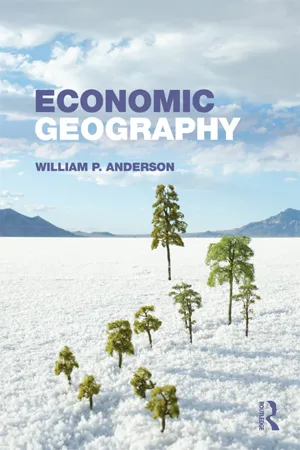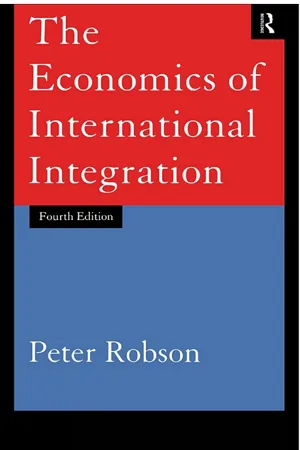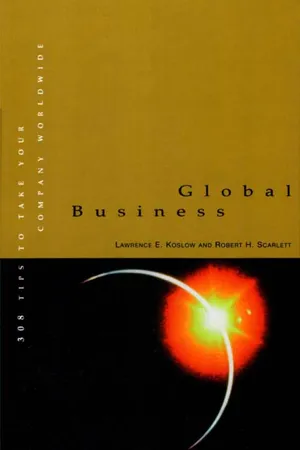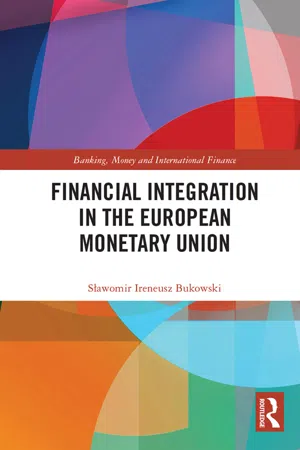Economics
Integrated Market
An integrated market refers to a situation where different economic agents, such as buyers and sellers, are able to freely exchange goods, services, and resources across geographical boundaries without significant barriers. This typically involves the removal of trade restrictions, tariffs, and other barriers to create a more seamless and efficient flow of goods and services.
Written by Perlego with AI-assistance
Related key terms
5 Key excerpts on "Integrated Market"
- Bela Balassa(Author)
- 2013(Publication Date)
- Routledge(Publisher)
An economic union, as distinct from a common market, combines the suppression of restrictions on commodity and factor movements with some degree of harmonization of national economic policies, in order to remove discrimination that was due to disparities in these policies. Finally, total economic integration presupposes the unification of monetary, fiscal, social, and countercyclical policies and requires the setting-up of a supranational authority whose decisions are binding for the member states. 3 Adopting the definition given above, the theory of economic integration will be concerned with the economic effects of integration in its various forms and with problems that arise from divergences in national monetary, fiscal, and other policies. The theory of economic integration can be regarded as a part of international economics, but it also enlarges the field of international trade theory by exploring the impact of a fusion of national markets on growth and examining the need for the coordination of economic policies in a union. Finally, the theory of economic integration should, incorporate elements of location theory, too. The integration of adjacent countries amounts to the removal of artificial barriers that obstruct continuous economic activity through national frontiers, and the ensuing relocation of production and regional agglomerative and deglomerative tendencies cannot be adequately discussed without making use of the tools of locational analysis. 4 The Recent Interest in Economic Integration In the twentieth century no significant customs unions were formed until the end of the Second World War, although several attempts had been made to integrate the economies of various European countries. 5 Without going into a detailed analysis, political obstacles can be singled out as the main causes for the failure of these projects to materialize- eBook - ePub
- William P. Anderson(Author)
- 2012(Publication Date)
- Routledge(Publisher)
1 Our objective here is more modest. Essentially, the next three chapters address the following question: how does the transition to a global knowledge economy affect the principles of economic geography as set forth in the first five sections of this book? Some observers argue that globalization and the proliferation of information and communications technology means that space is becoming irrelevant, distance is disappearing, so economic geography as we know it is out the window. But the fact that distance is getting easier to overcome does not mean it no longer matters. As we have already seen, reductions in the friction of distance lead to predictable changes such as increased scale of production and more spatial interaction. Perhaps most importantly, cheaper transportation and better communication make it easier for firms to exploit spatial differentiation at a global scale.These issues will be addressed in detail later, but at the outset some basic definitions are needed. The term “globalization” seems to have as many definitions as there are books and articles written about it. For the moment, let’s settle for a very simple definition of globalization as the integration of economic activity at a global scale. Of course, this begs the question: what do we mean by integration? International trade and foreign direct investment are both forms of economic integration that can be measured in terms of flows of goods or funds between nations. In these cases, production is still conducted within national borders. At a deeper level of integration, the production process itself involves tasks performed by different actors at different locations around the globe who are closely coordinated via information and communications networks. As we will see, people from a dozen or more countries may have been involved in the design, production, distribution and marketing of the shirt you are wearing right now. It is this more complex type of integration that most people have in mind when they speak of globalization. To make this distinction clear, we will use the term internationalization to refer to integration across national borders that involves goods that are produced in a single country but sold in to an international market. Internationalization is not distinct from globalization; rather, it is a limited form of globalization.The knowledge economy is not quite so easily defined. A precise definition, including an explanation of the distinction between information and knowledge, is deferred until chapter 26 - eBook - ePub
- Peter Robson(Author)
- 2002(Publication Date)
- Routledge(Publisher)
7 THE NEW ECONOMICS OF MARKET INTEGRATION
The orthodox theory of customs unions demonstrates that integration can provide expanded opportunities for countries to engage in inter-industry specialization within a bloc, in accordance with comparative advantage, thus bringing about a rationalization of its production. As long as the benefits from rationalization in the form of trade creation are not outweighed by reduced specialization brought about by trade diversion between the bloc and the rest of the world, as a result of the bloc’s discriminatory common external tariff, resource allocation will be improved. By that means a once-and-for all increase in the income and welfare of the member states as a whole may be brought about. The theory assumes a perfectly competitive framework in which homogeneous products are produced by firms that lack market power and incur few or no transaction costs. The core theory—customs union analysis—also excludes inter-country factor mobility.Although comparative advantage has always been a key concept in integration analysis, the thrust of much recent analytical and empirical work has been to question its relevance to contemporary trade and regional integration. The new emphasis has been prompted in part by the inability of the orthodox theory—even when scale economies are incorporated—to explain intra-industry trade in similar products. Yet a large part of modern world trade is made up of such trade. Indeed, much of the increase in intra-bloc trade in manufactures that took place following the establishment of the EC took that form and it has become a major component of trade in manufactures. New theories of trade have been developed which are capable of explaining this trade. As already noted, one explanation centred on the interaction of scale economies and product differentation (Krugman, 1979; Dixit and Norman, 1980). The other explanation turned on imperfect competition and the incentives it affords for engaging in active policies of market segmentation (Brander and Krugman, 1983). Both developments were responsible for a marked change in thinking about the gains from international trade and those from regional economic integration that became apparent from the middle of the 1980s. - eBook - ePub
- Robert H. Scarlett, Lawrence E. Koslow, J.D., Ph.D.(Authors)
- 2009(Publication Date)
- Routledge(Publisher)
The degree of economic integration is best measured by the relative ease of cross-border trade between the member nations. However, the large number of these efforts to ease trade or create preferences makes this measurement a bit difficult.Thousands of minor bilateral trade agreements exist all around the world. There are traditional trade preferences that former colonial powers extend to their former colonies, such as the British Commonwealth. There are also significant and comprehensive regional trade agreements like the European Union; the North American Free Trade Agreement (NAFTA); the Mercado Común del Sur (MERCOSUR), also known as the South American Common Market in the southern part of South America; and the Association of South East Asian Nations (ASEAN); as well as the major global trade regulatory agreements like the General Agreement on Tariffs and Trade (GATT) that have evolved into formal institutions like the World Trade Organization (WTO).To comprehend the nature and the degree of regional economic integration, and to determine how it might affect your business strategy, you may use the following criteria to guide your analysis:- All economic sectors: Are there some economic activities, like banking or insurance, or some natural resources, that are excluded from such arrangements?
- All trade financial activity: Are all areas of importation and exportation handled in like manner, or does the arrangement call for special handling of trade finance in certain sectors?
- All investment activity: Are investments governed in the same manner throughout the integrated territories?
- Taxation: Have tax laws been brought into conformity throughout the integrated territory?
- Standards: Are technical quality, safety, and consumer-protection standards the same throughout the integrated territories?
- Currency: Is the same monetary system and currency used throughout the territories?
- Labor law: Have the labor laws been brought into conformity?
- Social policy:
- Sławomir Ireneusz Bukowski(Author)
- 2019(Publication Date)
- Routledge(Publisher)
These factors foster capital movements and portfolio investments. Financial market integration into the regional monetary union with single currency, if it is not connected with regulations limiting the free movement of capital and financial investment between the union and the rest of the world, does not eliminate the impact of the financial market globalization processes. However, financial markets of the monetary union member countries can integrate faster within the framework of the union than with the global market. Doing away with multicurrency, which is a major barrier to the financial market integration, can make it so that the financial market integration within the framework of the monetary union is more advanced than that of financial markets of particular countries with the global market. The impact of common shocks typical of the economies of monetary union countries can be larger than that of the shocks coming from the global market. Effects of international integration of financial markets and economic growth Figure 2.1 Theoretical correlation between international financial market integration and financial development and economic growth Source: Bukowski (2011, p. 35). The integration of financial markets influences economic growth by stimulating financial development (including financial markets), as illustrated in Figure 2.1. On the basis of simulation tests, L. Guiso et al. (2004, pp. 6–30) showed that an increase in the financial integration of the EU countries to the level specific to the US or the maximum level in a given EU-15 country leads to an increase in the value added and industrial output in the whole EU-15. Obviously, the growth effects will be different in the case of individual countries and sectors
Learn about this page
Index pages curate the most relevant extracts from our library of academic textbooks. They’ve been created using an in-house natural language model (NLM), each adding context and meaning to key research topics.




